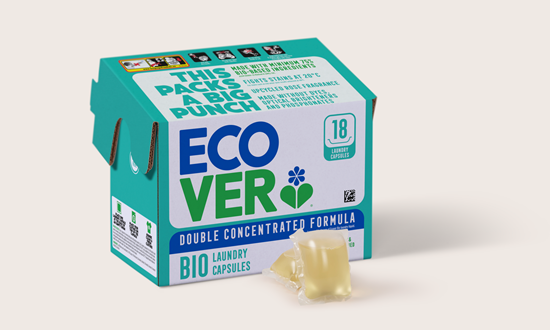Exploring bioplastic biodegradability and how it will impact our future
According to Report Insights, the biodegradable plastics market was worth 7.65 billion USD in 2022 and is projected to exceed 22.12 billion USD by 2030. While the appetite for plastics made from natural feedstocks is increasing, what can we expect for the future of bioplastic research? Here Dr Ashlee Jahnke, head of research and development at plastic substitute specialist Teysha Technologies, discusses common problems with bioplastics and how recent innovations in biodegradability will shape our future.
Many commercial developments show promising results and improvements in the technologies used to produce bio-based materials. For example, ABB has set out to automate NatureWorks’ bioplastics plant in Thailand, which could improve production throughput and help accelerate consumer uptake in bioplastics. What’s more, continued research has led to new and innovative products, such as the Röchling Group’s latest sustainable bioplastics, Röchling-BioBoom and Röchling-ReLoop, which are manufactured using renewable raw materials like cellulose.
While this is certainly commendable progress expected to strengthen the sustainability of recycled materials and bioplastics, questions remain over just how sustainable some bioplastics truly are. For example, many bio-based plastics still use petroleum-derived plasticiser additives to give them mechanical properties akin to traditional plastics.
Not only does this continue to rely on the availability of fossil-fuels, it also greatly affects the material’s biodegradability and environmental impacts. These materials will still require industrial processing to be recycled or broken down, potentially involving energy-intensive processes like catalytic pyrolysis. It’s important that future innovations tackle these issues so that the entire lifecycle of a bio-material can be considered truly sustainable. With this in mind, what can we expect from future bioplastic research?
Great expectations
One expected development is more companies working to make improvements in the large-scale processes required to source and produce bio-based materials, increasing opportunities for further testing and certifications through collaborations with strategic partners. Additionally, continued research will build upon 2022’s successes, where access to new polymer compositions greatly increased. The current library includes polymers containing a single carbohydrate-based monomer unit, multiple carbohydrate-based monomers, and other comonomers derived from natural sources such as agricultural waste.
Perhaps the biggest recent advancement has been in the development of natural polymer materials with tuneable thermal, mechanical, and degradation properties. For example, polymers containing varying percentages of the same two comonomers have demonstrated a range of glass transition temperatures from -40 to 60 degrees Celsius. These thermal transition properties are indicative of mechanical properties, like stiffness, elasticity and brittleness. By demonstrating varying transition temperatures, while maintaining molar mass, dispersity and thermal stability, certain characteristics of the resulting materials can be chemically designed and tuned to suit the needs of a given application.
Importantly, the advantages of more specialised, higher-cost monomers can be obtained by incorporating only partial percentages of the monomer into the final polymer structure. The enhanced tunability that this strategy allows will have a significant impact on the ultimate breadth of applications that these materials can be used in.
These important steps in the search for a truly sustainable bioplastic have been conducted by biodegradable biopolymer specialist, Teysha Technologies. The company’s material family, AggiePol, has a wide range of properties, and some have been designed with the target of achieving biodegradation on the timeline required for OECD 310 Ready Biodegradability Certification. This assesses the aerobic biodegradability of organic substances in freshwater environments and was achieved by an AggiePol material in June 2022.
As the appetite for biodegradable bioplastics continues to grow, this research indicates that the future of bioplastics need not rely on harmful, finite fossil fuels or energy-intensive degradation processes.
To find out more about Teysha Technologies and it’s research, head to www.teyshatech.co.uk.
Source:











